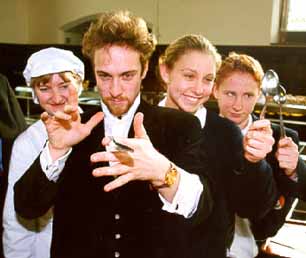

Telekinesis or Psychokinesis is about the movement of energy from faster moving frequency to the physical level. In that respect it is not unlike healing or energy work practiced by many healers today.
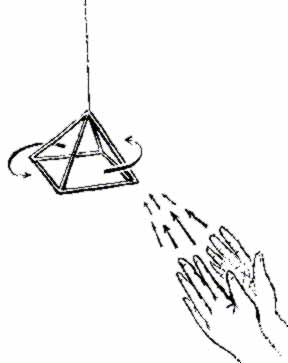
Telekinesis or Psychokinesis (PK) also refers to moving objects from one place to another without using physical contact. It also means re-shaping of objects using the mind's energies, such as bending a spoon, or key, by just holding it and focusing. The term 'Psychokinesis' comes from the Greek words psyche meaning life or soul and kineisis meaning to move.
Physical energy is created by electromagnetic impulses. Universal life force energy, or psychic energy, is called Chi. [Chee] In telekinesis one taps into Chi energy then combines it with physical energy.
Telekinesis cannot be created by wishingit to happen. For example, you may try to bend a spoon by focusing on it, but nothing happens. An hour later, you return to look at the spoon, only to discover it has changed shape.
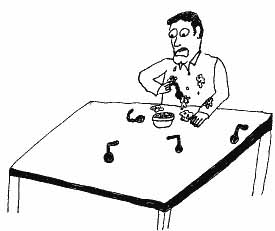
Teenagers, at puberty, seem to express an interest in developing telekinesis sometimes linked with other psychic interests. These might include telepathy, a feeling of not being from this planet or a connection with aliens, and poltergeist activity linked to telekinetic activity. Some teenagers move on with channeling through ouija boards - automatic writing, or other forms of psychic connections. It is all about power and the return of one's powers. Awakening
Amazing Telekinesis Experiments Reviewed in US Air Force-Commissioned Report Epoch Times - January 28, 2015

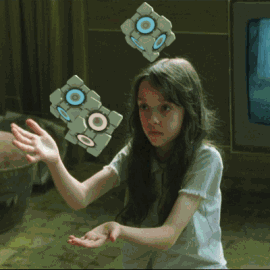
Studies have shown that people can use their minds (or some other unexplained means) to bend metal, transport objects from inside a sealed container to outside the container, and perform other amazing feats. Scientific experiments involving teleportation and other telekinetic abilities are reviewed in a research paper commissioned by the U.S. Air Force and written by astrophysicist Dr. Eric W. Davis in 2004, titled simply "Teleportation Physics Study."

Telekinesis is Emotionally Driven
Psychokinesis (literally "mind-movement") or PK is the more commonly used term today for what in the past was known as telekinesis (literally "distant-movement"). It refers to the psi ability to influence the behavior of matter by mental intention (or possibly some other aspect of mental activity) alone. As of 2004 the term remote influencing is becoming widely used for certain kinds of psychokinesis.
Psychokinetic events
There have been anecdotal reports of such apparent phenomena throughout history in various cultures. For example, poltergeist activity is typically characterized by objects being moved without apparent explanation, though some people claim that this is accounted for as unintentional PK by children going through puberty.
As with all psi phenomena, there is wide disagreement and controversy within the sciences and even within the field of parapsychology as to the very existence of psychokinesis and the validity or interpretation of PK-related experiments.
To date there has never been a scientifically demonstrated instance of psychokinesis.Parapsychologists usually make a distinction between macroscopic PK (large-scale effects observable by the naked eye or by a single measurement) and microscopic PK (small-scale effects only observable by statistical analysis of multiple measurements), and both types are still studied today, with more attention to the micro variety.
Some of the more extravagant accounts of macro PK in recent times were the so-called physical phenomena claimed to be observed during seances with mediums of the spiritualist era in the late 19th and early 20th century and studied by members of the Society for Psychical Research. Such phenomena included table tipping, rapping, and levitation, and the playing of musical instruments with minimal or no contact. In more modern times, claimed macro PK phenomena include the remote bending of cutlery (usually forks or spoons) or metal bars, and the production of images on unexposed photographic film by Uri Geller and other psychics.
By its nature, study of micro PK phenomena requires an experimental approach. The first recorded experiments of this type were conducted by J. B. Rhine and his associates in 1934, investigating whether subjects could affect the throws of dice. Similar experiments were soon conducted by many other parapsychologists.
Statistical results were generally far less than that observed for telepathy tests, and though a few anomalies were observed, no consensus emerged for the dice-tossing experiments. However, a 1989 meta-analysis by Diane Ferrari and Dean Radin of all such experiments in the literature from 1935 to that date showed an overall hit rate of 51.2% compared with chance expectation of 50%. Given the large number of trials involved, this is a significant figure, with odds against chance of more than a billion to one. There are critics of this analysis.
In more recent times, micro PK experiments have typically involved testing whether a subject can affect the outputs of random number generators (RNGs), aka random event generators, which generate a random bit stream based on the decay of radioactive materials or by electronic noise circuits. In a typical experiment, a subject is given feedback regarding the output of a RNG in one form or another, e.g. audible clicks in one ear and the other through headphones or a graphical readout of an accumulator, and is asked to try to mentally influence the RNG to favor one output over another, e.g. cause more clicks in the right ear, or cause the graph to move to the left.
There are several reasons for the development of this type of experiment, one of them being the ease of automating such experiments, which not only makes data collection easier, but also makes it easier to design more secure (fraudproof) experimental protocols.
Notable researchers who pursue RNG experiments are Helmut Schmidt, who pioneered them in the 1960s; Robert Jahn and his associates at the Princeton Engineering Anomalies Research Lab center (PEAR); and Dean Radin. A 1987 meta-analysis by Radin and Roger Nelson of such experiments from 1959 to that date covering 832 studies (235 of them control studies) showed a hit rate of about 51% for the experimental studies compared to 50% for the control studies (i.e. comparable to the dice tossing studies), with odds against chance of about 1 trillion to one. There are critics of this analysis.
During the 1950s-1960s, the Soviets conducted and presented research to various worldwide audiences in Psychokinesis, including levitation. One case was Nina Kulagina, a Leningrad housewife who demonstrated PK abilities to Western scientists. They witnessed the leviation and movements of various stationary objects, the changing of course of objects already in motion and the change of the rate of beating to a removed frog's heart.
Apparently the effort from speeding up and slowing the heart caused a lot of strain and could not be continued indefinitely, so Kulagina stopped the heart.RNG studies continue today, with long-term studies conducted at the Princeton Engineering Anomalies Research (PEAR) center. RNG devices are also used by the Global Consciousness Project. As a technological curiosity, on Nov 3rd, 1998 the US Patent Office granted Patent #5830064, "Apparatus and method for distinguishing events which collectively exceed chance expectations and thereby controlling an output", to inventors including several researchers from PEAR.
The patent in no way relies on the existence of psi phenomena, but in the description the inventors do suggest that "One application of the present invention is the investigation of anomalous interaction between an operator and random physical systems, whether by serious scientists or curious members of the public who would like to conduct experiments on their own."
The central idea of the patent is that a single device (microchip) includes both a true RNG and an accumulator circuit which can detect when the output of the RNG varies significantly from expected chance output. The output of the accumulator/detector circuit can then be used as an input to some control circuit. The idea then is that if a PK channel is truly available, then an operator should be able to mentally affect the RNG such that the detection circuit triggers, providing a psi-controlled switch. No actual applications of this patent are known at the time of this writing.
Perhaps the most remarkable (and controversial) PK experiments involving RNGs were first conducted by Helmut Schmidt. Noting that some reported psi phenomena do not appear to be time bound, and that some interpretations of quantum theory posit a relationship between observer and the observed and the indeterminacy of some events until observed, Schmidt designed experiments in which a subject was asked to influence the output of an RNG after the output had already been recorded, i.e. the subject was being asked (unknown to the subject) to affect the behavior of the RNG over an interval of time in the past.
One of the advantages of such an experiment is the degree of security (fraud prevention) that can be designed into the protocol. After a series of such experiments with positive results (odds against chance of 1000 to 1) involving independent third-party observers, one of the observers, theoretical physicist Henry Stapp of UC Berkeley, wrote an article for the prominent journal Physical Review in 1994 in which he attempted to show how PK might be consistent with a generalization of quantum theory, and that such phenomena merited further study.
There have also been studies of possible mental influence on living systems, such as the effects of prayer and remote healing, or, in research conducted in the former Soviet Union, the ability of one subject to induce hypnosis or wakefulness in another subject remotely.
Various models have been proposed for various aspects of PK as well as other psi phenomena, but so far there is no widely accepted physical theory or proposed mechanism that explains how such phenomena might occur.
Many parapsychologists with backgrounds in physics point out that despite lack of a proposed mechanism for psi phenomena, the currently understood laws of physics do not preclude such phenomena, and they are confident that eventually extensions to today's physical theories will fill this gap. There are critics who disagree with this assessment.
Some Christian religious scholars believe that Psychokinesis is a spiritual gift and is apparent in various Bible stories, such as the release of Paul and Silas's bands during their escape from prison in Acts 16, and others. Other religions also cite various cases of psychokinesis including Astral projection in Shamanism, Yogic flying, poltergeists and various healings.
Many parapsychologists believe that there is sufficient evidence of psychokinesis in controlled experiments to prove its existence and to justify it as a field of study.
Remote influencing
In recent years, the term remote influencing has been become popular to describe the application of psychokinesis to biological systems. This may be to impact either positively or negatively upon health, alter mood, or influence decision making.
In a similar fashion, remote viewing has been applied to clairvoyance. These terms emerged from research undertaken by the American government, for the application of psychic abilities to intelligence gathering, military force, and remote assassination. Psychokinesis
Can You Perform Psychokinesis? Try This Experiment at Home for Fun Epoch Times - August 7, 2015
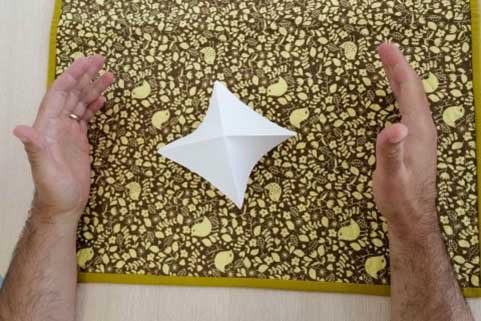
You will need:
-A square piece of paper
-An eraser (or something a needle will stick into and stand up in. We used a small candle)
-A needle
-An open mind